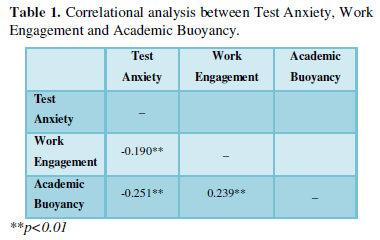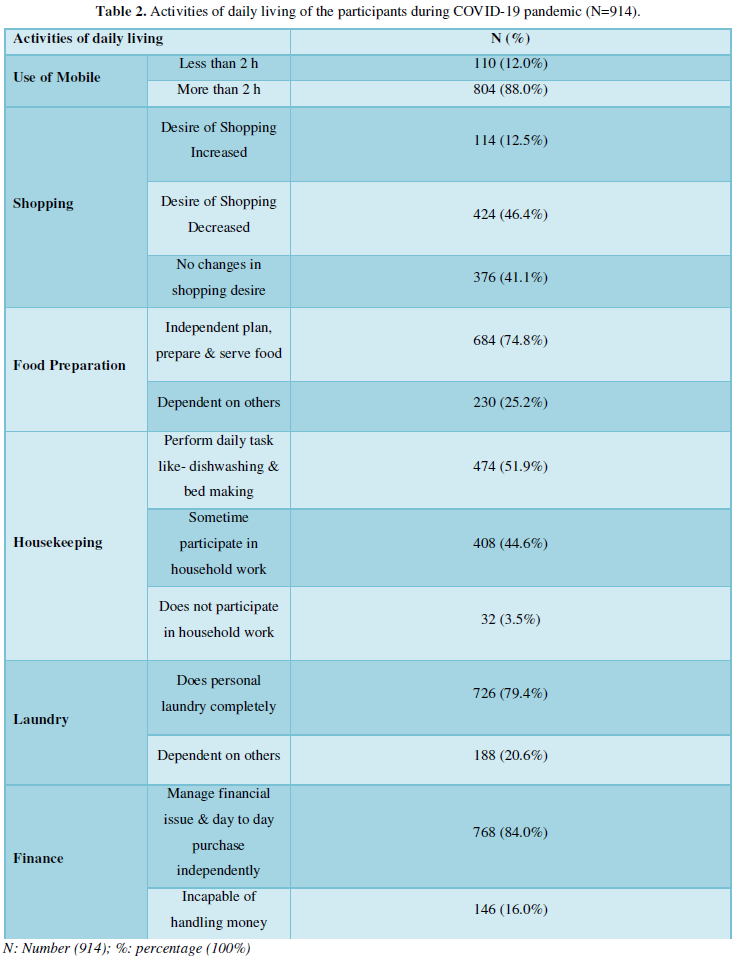Review Article
Radiobiology in Nowadays: Review in the News Trends in Radiopharmacy and in Psychiatric Diagnosis
4261
Views & Citations3261
Likes & Shares
Introduction: In Nuclear medicine radiopharmaceuticals or radiobiocomplex are used to obtain images of the human body to recognize alterations in the physiology and to identify metabolic problems. The psychiatric diagnosis of different mental disturbs is nowadays a good resource and a data bank of the obtained images is made to attend the clinic use. Using a mathematical language, the nuclear medicine inform that the obtained image belongs to a psychiatric group of diseases.
Objective: The authors pretend to review the news publications done with radiopharmaceuticals, nuclear medicine and psychiatry to elucidate the applications in these areas.
Methods: It was searched in June 30th 2021, the PubMed database articles published in the last 5 years with the following key-words: nuclear medicine and radiopharmaceuticals and psychiatry as a review and systematic review works.
Results: Then it was founded 38 works in the PubMed database. Only 17 were as a free full text article. It was selected 7 articles that have a mention about medical image diagnostic for psychiatric disorders and the use of radiopharmaceuticals. These were described using the methods, results and conclusions about the research they were proposed.
Conclusions: By the way, the psychiatrics pass by to have information about of mental disease, their classification, prognostic and diagnose suggestions by data bank.
Keywords: Radiobiology, Radiobiocomplex, Nuclear medicine, Radiopharmacy, Psychiatry, Medical image diagnosis, Data bank
INTRODUCTION
In Nuclear medicine radiopharmaceuticals or radiobiocomplex [1] are used to obtain images of the human body to recognize alterations in the physiology and to identify metabolic problems [2-4]. The use of radiopharmaceuticals in medicine was recommended along the years to diagnostic diseases of the human system [5].
Radiopharmaceuticals as well as HMPAO [6], SESTAMIBI [7], ECD [8], and others that use 99mTc as a probe to identify the target organs metabolic physiology, and in psychiatric diagnosis they are still used too [9-15]. Other works using FDG could also identify cerebral altered activity [16-18], because FDG with the probe of glucose labelling with 18F as a marker of the metabolic activity of the brain using glucose or the lack of its activity because the neurons are damaged.
The psychiatric diagnosis of different mental disturbs is nowadays a good resource and a data bank of the obtained images is made to attend the clinic use [12]. This data with nuclear medicine imagens has a differential of figures obtained from patients’ brains that could be useful in our days [9-12].
The psychiatry is one of the more needy medical specialties, in terms of complementary examinations, and the cerebral SPECT done with HMPAO could be used to help the clinician in doubt cases. In some cases when we have the association of cerebral SPECT with computed tomography and/or magnetic resonance could precede the mental diseases diagnostic. Using a mathematical language, the nuclear medicine inform that the obtained image belongs to a psychiatric group of diseases (for example, bipolarity, schizophrenia, and others) [11].
In this work authors pretend to review the news publications done with radiopharmaceuticals, nuclear medicine and psychiatry to elucidate the applications in these areas.
METHODOLOGY
It was searched on June 30th 2021, the PubMed database articles published in the last 5 years with the following key-words: nuclear medicine and radiopharmaceuticals and psychiatry as a review and systematic review works. Then it was founded 38 works that only 17 were as a free full text article. It was selected 7 articles that have a mention about medical image diagnostic for psychiatric disorders and the use of radiopharmaceuticals. These were described using the methods, results and conclusions about the research they were proposed. These findings were presented through tables bellow.
RESULTS
In Table 1 it is analyzed the methods and results presents in 7 articles chosen from the research in PubMed.






In Table 2 it is compared the conclusions obtained in those 7 articles founded.
DISCUSSION
In nuclear medicine the use of radiopharmaceuticals to diagnostic brain disturbs is well known [1,2,5]. In psychiatry the use of radiobiocomplex to obtain diagnose about behavior findings in disturbed people is still a new approach although there are some data-bank that are used to do the diagnostic [9-12].
All the selected authors in their works used radiopharmaceuticals and nuclear medicine procedures to try to diagnostic and following mental disturbs, it is a beginning of a new way to look the brains commitments that could alter the human health life, and the use of radiopharmaceuticals as a tool to diagnose and follow this disturbs.


Chandra and his collaborators showed the new promising use of PET molecular imaging in the diagnosis of some neurological process [13]. Pet molecular image of the brain involves increase or decrease glucose metabolism.
Other authors empathized the use of PET associated with some radiopharmaceuticals as FDG that it is useful for central nervous system diseases [16-19]. Those are metabolic reasons for the brain function and the use of glucose labelling with 18F is the tool to discover it.
Others discussed the use of radiopharmaceuticals for diagnostic in psychiatry cases like dementia [14,15]. The diagnostic in psychiatry has an advance in the use of this radiopharmaceuticals that could improve images of the brain function discovering the disturbs origin of those diseases.
Although, the methodologies utilized in their works, all are convinced that the nuclear medicine is the way to diagnostic and following the patients with some brain disturbs [13-19], what is not well-determined by the psychiatrist today.
CONCLUSION
The mental disease tends to be understood as a cerebral disease, to see how the brain works pass by to be a priority, and the perfusion scintigraphy, the way to sustain it.
The use of FDG as a tool to determine metabolic brain function could help the psychiatry about some lesions into the brain that could be caused by metabolic disturbs.
The use of HMPAO radiopharmaceutical that through the haemato-encephalic barrier immediately before the endogenous injection, could be an option more useful for the PET scan studies in mental disturbs that today no causes are described.
By the way, the psychiatrics pass by to have information about of mental disease, their classification, prognostic and diagnose suggestions by data bank.
More research would be done to cover all aspects of diagnostic medicine that could help the psychiatry in the discover of brain function and to treat brain disfunctions.
ACKNOWLEDGMENTS
We thanks to Clínica Serviço de Imagem Médica, that supporting this work.
- Bernardo-Filho M, Santos-Filho SD, Moura EG, Maiworm AI, Orlando MM, et al. (2005) Drug interaction with radiopharmaceuticals: A review. Braz Arch Bio Technol 48: 13-27.
- Manabe O, Kikuchi T, Sholte AJ, Mahdiui EI, Nishii R, et al. (2018) Radiopharmaceutical tracers for cardiac imaging. J Nucl Cardiol 25: 1204-1236.
- Gialleonardo YD, Wilson DM, Keshari KR (2016) The potential of metabolic imaging. Semin Nucl Med 46: 28-39.
- Vallanhajosula S, Killeen R, Osborne JR (2010) Altered biodistribution of radiopharmaceuticals: Role of radiochemical/pharmaceutical purity, physiological, and pharmacologic factors. Sem Nucl Med 40: 220-241.
- Drozdovitch V, Brill A, Callahan R, Clanton J, DePietro A, et al. (2015) Use of radiopharmaceutical in diagnostic nuclear medicine in the United States: 1960-2010. Health Phys 108: 520-537.
- Kaya GC, Bekis R, Kirimca F, Ertay A, Gure A, et al. (2001) Use of technetium-99m HMPAO scintigraphy for the detection of amiodarone lung toxicity in a rabbit model. Eur J Nucl Med 28: 346-350.
- Kim CK, Kim S, Krynyckyi BR, Machac J, Inabnet WB (2002) The efficacy of sestamibi parathyroid scintigraphy for directing surgical approaches based on modified interpretation criteria. Clin Nucl Med 27: 246-248.
- Kabasakal L (2000) Technetium-99, ethylene dicysteine: A new renal tubular function agent. Eur J Nucl Med 27: 351-357.
- Jales RLC, Santos-Filho SD (2020) Discussion of review on protocols treatments of Arachnoid Cysts explored by nuclear medicine. EC Clin Med Case Rep 3(6): 147-152.
- Jales RLC, Santos-Filho SD (2020) Approaches of nuclear medicine in psychiatry: perfusion against function, the psychiatric question. EC Clin Med Case Rep 3(3): 1-5.
- Jales RLC, Santos-Filho SD (2021) Psychiatric diagnostic confirmed by cerebral simple proton emission computed tomography (SPECT). Jap J Clin Med Res 1: 1-3.
- Amen D, Trujillo M, Newberg A, Willeumier K, Tarzwell R, et al. (2011) Brain SPECT imaging in complex psychiatric cases: an evidence-based, underutilized tool. Open Neuroimag J 5: 40-48.
- Chandra A, Valkimadi PE, Pagano G, Cousins O, Dervenoulas G, et al. (2019) Applications of amyloid, tau, and neuroinflammation PET imaging to Alzheimer’s disease and mild cognitive impairment. Hum Brain Mapp 40: 5424-5442.
- Ducharme S, Dols A, Laforce R, Devenney E, Kumfor F, et al. (2020) Recommendations to distinguish behavioral variant frontotemporal dementia form psychiatric disorders. Brain 143: 1632-1650.
- Fuller JT, Cronin-Golomb A, Gatchel JR, Norton DJ, Guzmán-Vélez E, et al. (2019) Biological and Cognitive markers of presenilin1 E280A autosomal dominant Alzheimer’s disease: A comprehensive review of the Colombian kindred. J Prev Alzheimers Dis 6: 112-120.
- Meyer PT, Frings L, Rücker G, Hellwig S (2017) 18F-FDG PET in Parkinsonism: Differential diagnosis and evaluation of cognitive impairment. J Nucl Med 58: 1888-1898.
- Niccolini F, Politis M (2016) A systematic review of lessons learned from PET molecular imaging research in atypical parkinsonism. Eur J Nucl Med Mol Imaging 48: 2244-2254.
- Walker Z, Gandolfo F, Orínís S, Garibotto V, Agosta F, et al. (2018) Clinical utility of FDG PET in Parkinson’s disease and atypical parkinsonism associated with dementia. Eur J Nucl Med Mol Imaging 45: 1534-1545.
- Zhang L, Hu K, Shao T, Hou L, Zhang S, et al. (2021) Recent developments on PET radiotracers for TSPO and their applications in neuroimaging. Acta Pharm Sin B 11: 373-393.
QUICK LINKS
- SUBMIT MANUSCRIPT
- RECOMMEND THE JOURNAL
-
SUBSCRIBE FOR ALERTS
RELATED JOURNALS
- Journal of Nursing and Occupational Health (ISSN: 2640-0845)
- International Journal of Internal Medicine and Geriatrics (ISSN: 2689-7687)
- Journal of Blood Transfusions and Diseases (ISSN:2641-4023)
- Journal of Infectious Diseases and Research (ISSN: 2688-6537)
- Journal of Carcinogenesis and Mutagenesis Research (ISSN: 2643-0541)
- Archive of Obstetrics Gynecology and Reproductive Medicine (ISSN:2640-2297)
- Advance Research on Endocrinology and Metabolism (ISSN: 2689-8209)





